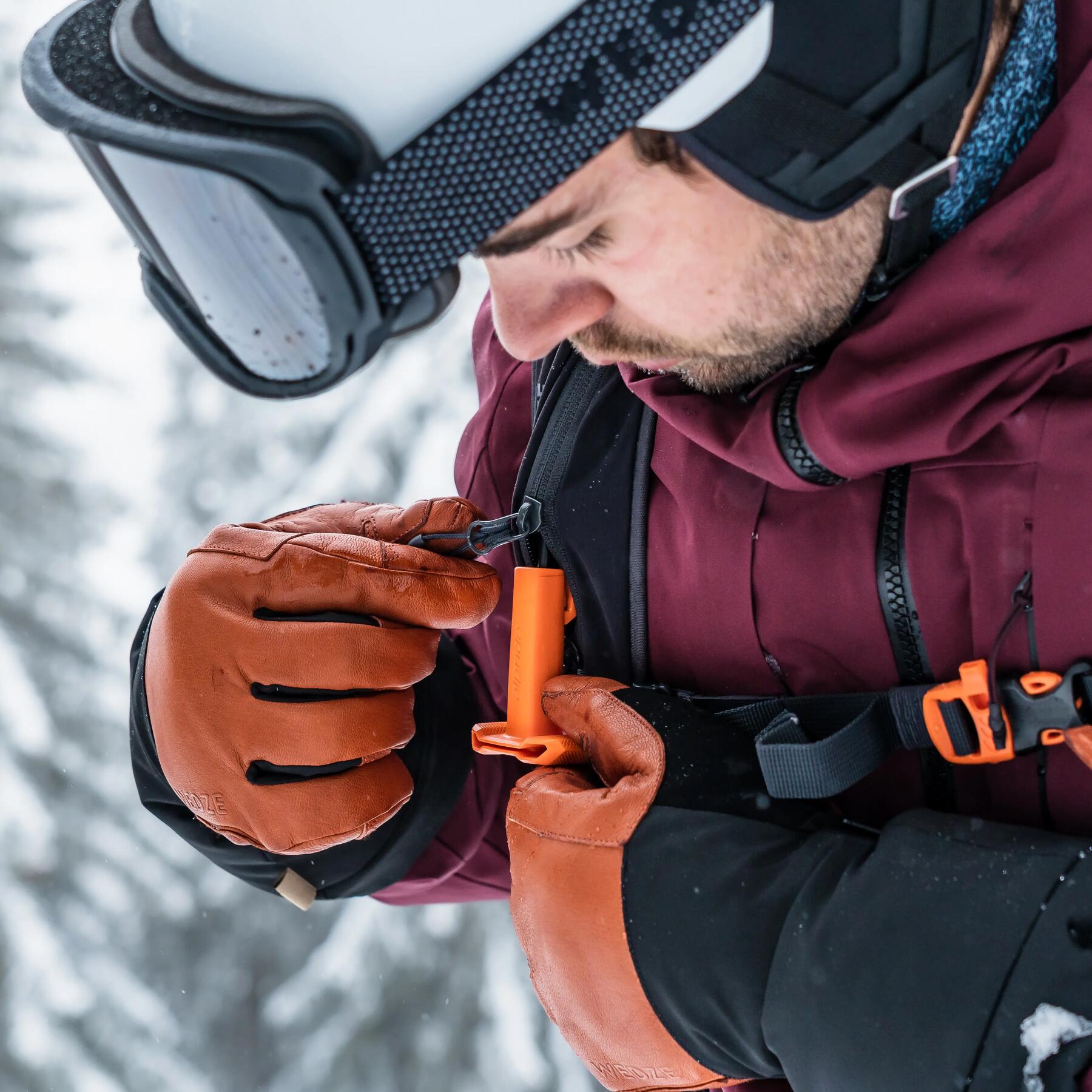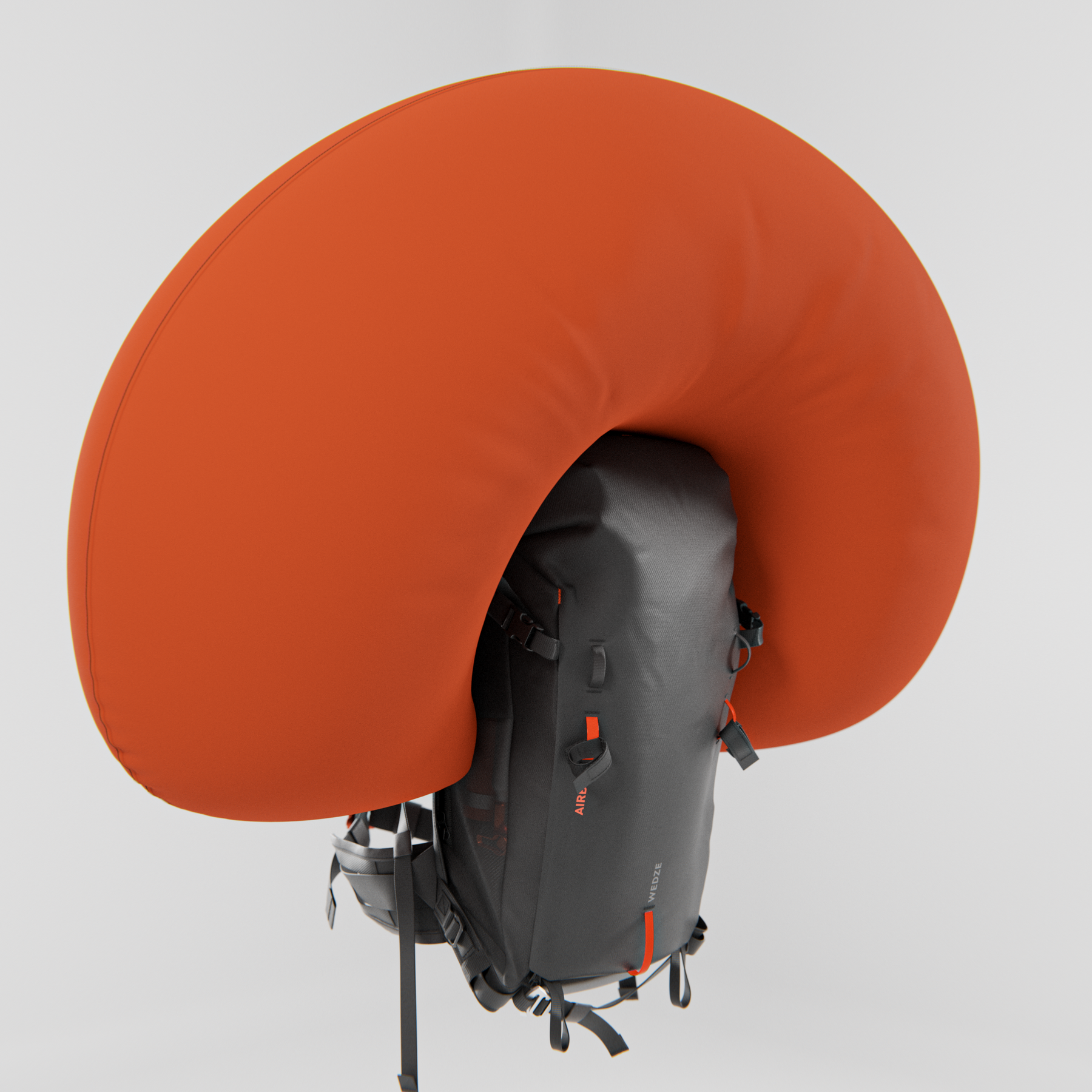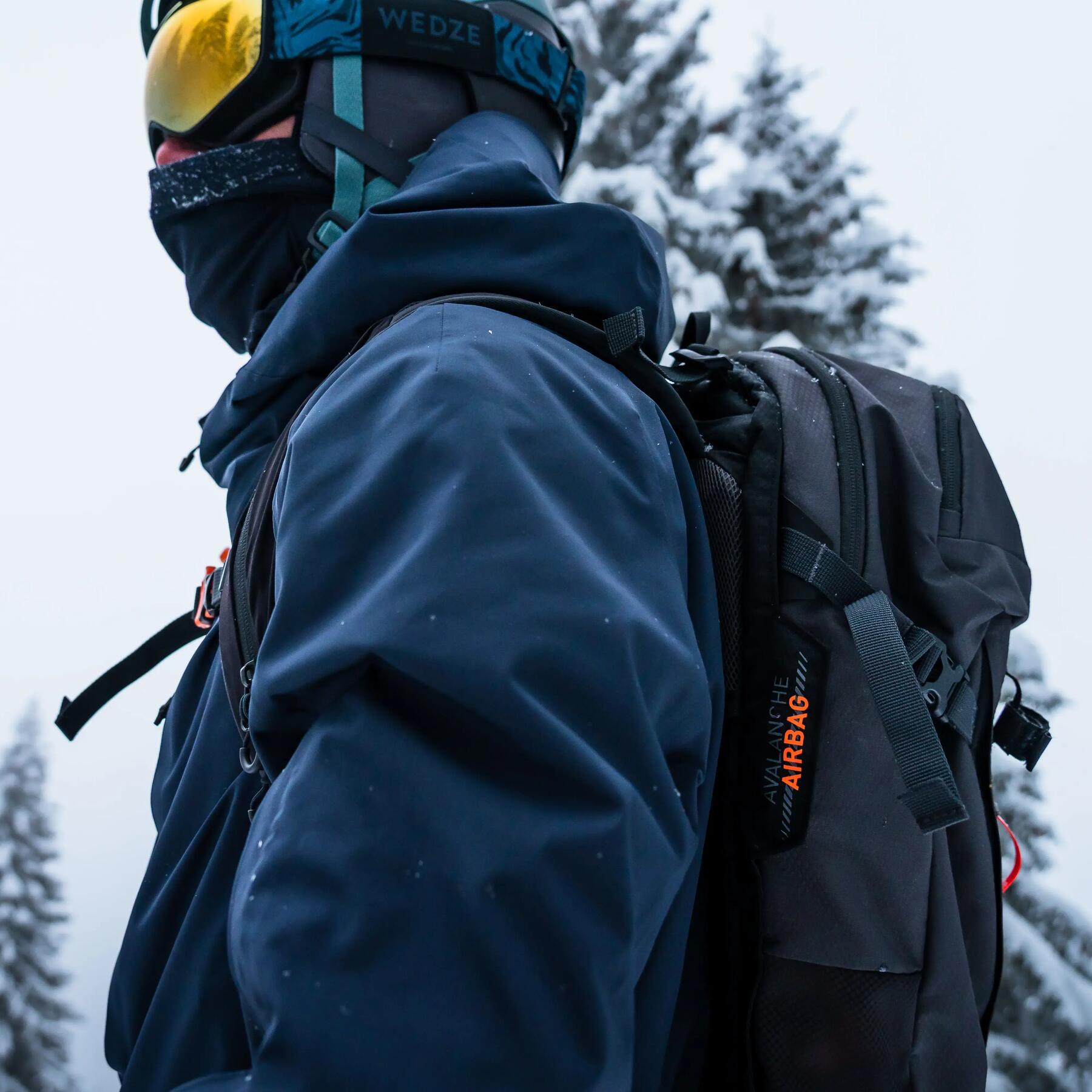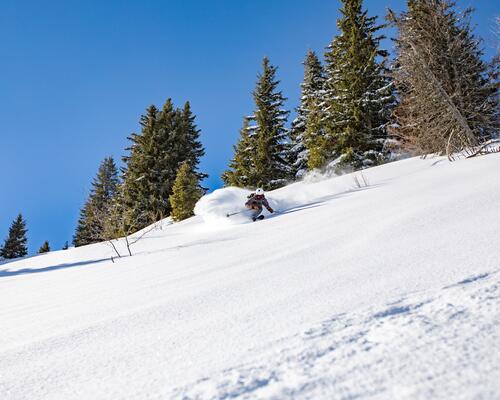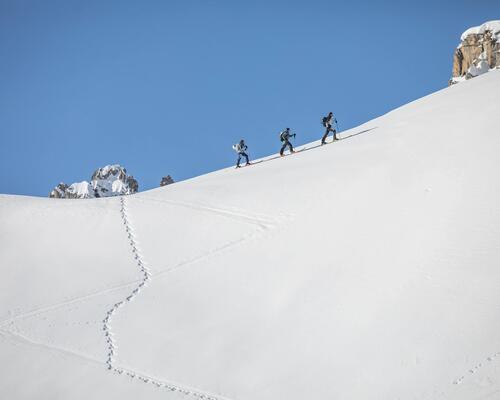What is an airbag backpack used for when skiing?
An airbag backpack is simply a bag fitted with a balloon that can be activated by pulling on a small handle. When inflated, it will help you stay on the surface in the event of an avalanche, and staying on the surface increases your chances of getting out. So how does it work? In the snowpack, we know that by increasing the surface area of an element that would be carried away by the avalanche (the body in this case), it sinks less into the snow. This is the granulometry rule. This is what the balloon does. By increasing your total volume, this extra equipment increases your chances of staying at or near the surface. What’s more, the volume created around your back or neck by the shape of the cushion also protects you from the impact and pressure of the snowpack.
Although effective, this equipment should not be taken as life insurance! It in no way exempts you from complying with safety rules when you go off-piste and does not replace the avalanche transceiver, shovel and probe that you should always have with you. And it’s always necessary to remember that conditions should be respected, so we’ll mention these a little further down after detailing everything you need to know about an airbag backpack.

